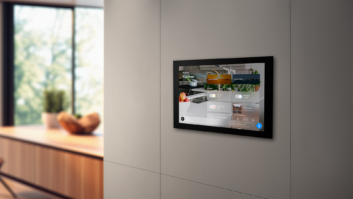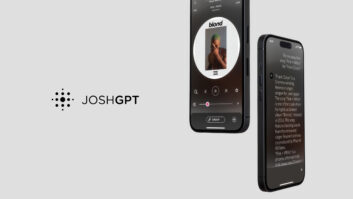On the surface, it might appear that the announcements from Tuesday’s Google product introduction event was about, well, products. There were certainly more than enough new products to fill a shopping cart. The underlying message, however, may well have been what Google Inc.’s CEO, Sundar Pichai called “…a move from mobile first to AI first.” With the Google Assistant central to all the new products, that vision of an ecosystem was the underlying premise behind the announcements.

Google’s new products, including Pixel phones, Google Home, Daydream View, Chromecast Ultra, and Google WiFi.
We don’t have the space here to delve more deeply into the Assistant’s capabilities, but in a nutshell, it adds “conversation actions” that require a bit of back and forth with the search base or app to traditional “direct actions” that respond to a voice command. The latter is mostly “say – do” (tell the device to do something, and it fulfills the request.) The former is easiest to think of as “say – analyze – search – think – respond or do – reanalyze – refine – respond – respond or act again.” The search agents will find the answer to a question or complete a task using the vast array of images, sounds, content, and actions that Google can access.
A good example is to ask for the name of local French restaurants, responding to the list with “make a reservation at XYZ,” and then, continuing to speak the time requested, who to call or SMS to meet you, add it to your calendar, order an Uber, specify “UberX” or UberXL.” confirm the ride and then let you know who the driver is and when they will arrive.
Google Assistant’s software is essential, but as Rick Osterloh, senior VP for hardware and the head of Google’s newly formed Hardware Group, stated, “This is the right time to be focused on hardware and software…at the intersection of hardware and software, and AI is at the center of it all.” In Sundar Pichai’s words, the hardware lineup is meant get the Assistant in the hands of users “…on two new surfaces, in the context of the phone and in context of your home.”
The products start with a pair of new phones, branded as “Pixel,” replacing the current “Nexus” branding. Running Nougat 7.1, the Google Assistant is behind the scenes running the show. Extraordinary image capture is claimed, with a 12.3MP rear camera and an 8MP front camera. Sweetening the deal, unlimited image storage via Google Photos is included. Fast charge capability for the battery provides a recharge of up to seven hours in just 15 minutes.
Verizon will be the only carrier to offer the phones, but they will also be available as unlocked devices directly from the Google Store. Pricing for the 5-inch model is $649 or $27.01/month for 32Mb or $749 or $31.25/month for 132Mb. The 5.5 inch is $769 or $32.04/month for 32Mb and $869 or 36.21/month for 128Mb. Preorder is open, with a coupon for a Google Daydream View included. Delivery date was not mentioned.

Google Home is available in a variety of metal and fabric base options.
Daydream View is Google’s VR system. It still uses a phone, initially the Pixel models but later a wide variety of Android phone brands, much as Gear VR uses a Samsung phone. You might say that it is just a fancier Cardboard, but it includes a two-button wireless controller to let the user interact with the content without head movement. Content expands beyond what is already available for Cardboard, such as the NY Times, with VR content apps to come from Hulu, HBO Now, Netflix, and others.
At $79, with availability in November from Verizon, Best Buy, and the Google Store, it will be interesting to see how Daydream View competes with Gear VR in one form factor expression and Oculus, Sony PlayStation VR, and HTC Vive at the other end of the price scale.

A simple Android or iOS setup app is used to configure Google Home.
As expected, Chromecast Ultra will be priced at $69 with November availability. In a form factor almost identical to the current “round” Chromecast, it adds 4K capability with content from Netflix, YouTube, and soon from Google Play for movies and TV.
Chromecast Ultra continues to use the concept of letting the user’s phone, tablet, or computer do the driving. Announced, but not expected are two features that will differentiate it from other “dongles,” such as Amazon FireTV Stick and Roku’s Streaming Stick. The 4K is obvious, but along with the HDR-10 available on the Roku Premiere+ and Ultra models, it also offers Dolby Vision capability. The other dongle-size market exclusive is an Ethernet port on the power adapter for situations where Wi-Fi may not be robust enough for 4K content.
Clearly different in approach from both the new 4K models from Roku and the updated FireTV Stick, it will be interesting to see how the market accepts its price in relation to the features and price of the competitors. One final thing that the others can’t match is integration with the Google Assistant via Google Home.

Chromecast Ultra adds not only 4K, but both HDR-10 and Dolby Vision, and an Ethernet ports on the power adapter.
First revealed earlier in the year at Google I/O, Google Home is available now for preorder on the Google Store and will be available on November 4from Google, Best Buy, Target, and Walmart. Priced at $129, including a six-month subscription to YouTube Red, it will be $50 less than Amazon Echo but almost two and half times more than the second-generation Amazon Dot. Bases will come in Mango, Marine, and Violet fabric, and Carbon, Silver, Copper, in the standard gray fabric.
The basic feature set is mostly unchanged from I/O; in many respects working the same as the Amazon Echo with far-field mics, audio from a tuned array of a 2-inch driver and a pair of 2-inch passive radiators that will likely rival Echo’s sonic performance.
Google’s bet here is on the use of Google Assistant as the “conversational search engine” to direct what Google Home does. Along with audio play command it also controls video content from Chromecast dongles or equipped speakers and TVs. In a bow to multiroom audio, it can play the same content on multiple Home or Chromecasts within the home. There is no direct audio output, but Chromecast Audio dongles may be used for that purpose.

Daydream View is phone-based, but includes a wireless controller that eliminates the need for head movements.
To be successful Google Home will have to catch up to Amazon’s head start with thousands of connected device options and skills, along with the additional Amazon software for developers and installers announced at CEDIA. Initial support will be there for Nest, Samsung SmartThings, Philips Hue, and IFTT, with more partners to come. An open developer platform accommodates currently existing actions and apps created with “API.AI” as well as an Embedded SDK launching next year for use with everything from mass market CE products down to Raspberry PI. Here, too, the goal is clearly to match Amazon’s tools for building skills.
Add the ability to include items stored in Google apps, voice command Netflix content, or to play photos by name from to a screen with a Chromecast, and this is going to be a competitive product and platform that will give Amazon and Apple a run for their voice control dollars. In particular, Apple’s current limitation of Siri control to phones and tablets again makes one wonder to how the Cupertino giant will respond.
These new Google products, also including a new Wi-Fi router/access point, as well as Amazon’s aggressive push and the unpredictability of how Apple will respond points to a vibrant new market segment all will be able to profit from if they play their cards correctly.







